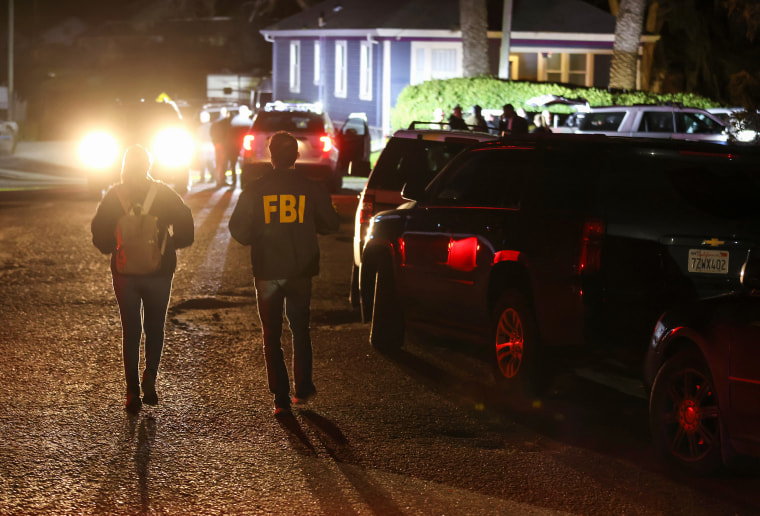The FBI released its 2022 annual Active Shooter Report on Wednesday. If you were pressed for time and chose to read only the first page executive summary, you might think the data was trending in the right direction: It states there was an 18% decline in active shootings last year (50 incidents) versus 2021 (61). Yet — as with many statistical reports — the devil is in the details. While it’s understandable to celebrate 11 fewer active shooter incidents, it’s the numbers that increased that should give us pause.
First, one would think that the fewer active shooter incidents per year, the safer we all are. But — for last year at least — that wasn’t the case. Though active shootings were down, the shooters killed or wounded almost six dozen more victims in 2022 versus 2021. (As explained in the report, the FBI defines an “active shooter” as: “One or more individuals actively engaged in killing or attempting to kill people in a populated area.”) The casualty count from those events was the highest in the last five years. 2022 was a violent year for victims killed or wounded by active shooters. In 2020 there were 164 such casualties; in 2021 that number rose to 243; and last year the dead or wounded figure climbed again to 313.
That increase in casualties coupled with the drop in total incidents means we’re more likely to be shot if we become part of an active shooter event. That’s likely due to factors like more powerful and faster weapons used, more high-powered rounds of ammunition fired with more devastating results, and perhaps delayed or inadequate police response such as in the Uvalde, Texas school shooting.
Second, 2022 saw a slight rise in active shootings that also met the FBI’s parameters for a “mass killing,” defined as three or more killings in a single incident, not including the shooter. This translates not only to an increased risk of being wounded in an active shooting, but to being murdered when that active shooting happens to you. Such shootings resulted in 13 deaths in 2022, compared to 12 deaths in 2021.
Third, last year was a particularly lethal one for law enforcement officers who responded to active shooter incidents. Twenty-one officers were killed by active shooters last year, compared to just five in 2021. It’s that kind of risk that’s partly behind law enforcement groups such as the Texas Police Association — the state’s largest police organization — vocally opposing lawmakers’ moves to permitless carry legislation. More guns, carried by more people, without mandatory training, licenses, or even background checks in some instances, means more dead police officers.
Faced with these numbers, the question now is what actions can we take that would matter most in the effort to keep those stats from rising again next year?
Ammunition regulation would be a logical start. While the Second Amendment might be interpreted as preserving the right to possess ammunition, there’s nothing in the Constitution enshrining the right to an unlimited supply of musket balls. According to Giffords Law Center for the Prevention of Gun Violence, we should explore ways to regulate either the purchase of an alarming amount of ammunition — particularly by those who couldn’t pass a background check to buy a gun — and/or the purchase of particularly devastating bullets: the kinds that pass through a police officer’s body armor. Law enforcement’s eyes were opened to the total lack of federal regulation of ammunition after the 2012 mass shooting at a movie theater in Aurora, Colorado, where 12 people died and 58 were wounded. The Giffords Center explains:
“While the shooter purchased his firearms at local gun stores, he ordered his ammunition cache—3,000 rounds each of handgun and rifle ammunition and 350 shotgun shells, as well as a 100-round magazine—from online retailers over the course of several months prior to the shooting.”
There’s also a similar absence of federal regulation over the type of ammunition a person can buy. The Giffords Center points out that armor-piercing bullets, 50-caliber ammunition and Black Talon bullets serve “no legitimate sporting purpose. Strict control on the manufacture, transfer, and possession of these types of ammunition can help promote public safety.”
Finally, it’s not only how much and what type of ammunition a person can purchase, but how many rounds of that ammunition they can continuously fire through an extended magazine before they have to reload. An extended-capacity magazine, defined as holding more than 10 bullets, resulted in a 62% higher death toll in mass shootings between 1990 and 2017. For example, the shooter in the 2017 Las Vegas massacre used a dozen large-capacity magazines that allowed him to fire 100 rounds in 10 seconds without reloading.
Those magazines — along with assault-style rifles — were banned in 1994. But Congress allowed that ban to expire in 2004. It’s time to bring back that federal ban. Various states have implemented their own bans on assault weapons, ammunition purchases and extended capacity magazines, but piecemeal policing isn’t enough to overcome Congress’ sclerotic inaction on a national crisis.
The 2022 FBI Active Shooter Report provides the statistics that tell the story. Now, that story needs a significant rewrite if we have any hope of a better chapter next year.

